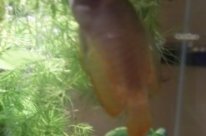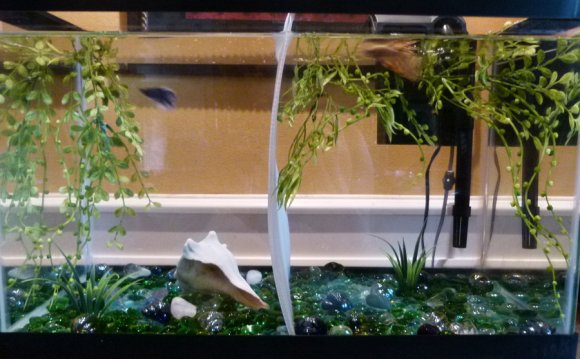
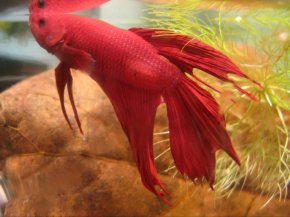 The majority of diseases are caused by bad water conditions. If you take care of your water quality by doing frequent waterchanges, and house and care for your betta sufficiently, disease will be scarcely a problem. However, disease does happen, and it is good to be prepared incase it does. Having a few medications on hand is a good idea.
The majority of diseases are caused by bad water conditions. If you take care of your water quality by doing frequent waterchanges, and house and care for your betta sufficiently, disease will be scarcely a problem. However, disease does happen, and it is good to be prepared incase it does. Having a few medications on hand is a good idea.
Fin rot is probably be the most common disease for Bettas.
Fin Rot is manly caused by dirty water, but it can also be caught if they damage their fins (such as tearing them on a sharp ornament), from here, it is open to bacteria, and fin rot may take hold.
If you happen to have a divided tank that allows Betta's to share the water, treat all the Betta's involved.
To tell if your Betta has Fin Rot, his tail will look torn, or with bits missing. The edges may have either a white or black lining.
TIP: If you use aquarium salt, 100% sea salt is pretty much the same and works just as well. Any salt as long as it does NOT contain Iodine is fine. I use rock salt, but make sure it is dissolved before use. Use at a dosage of 1 tsp per 20L.
Once Fin Rot is treated, fins should grow back, but there is a chance they will not be quite the same as before, depending on how severe the case was.
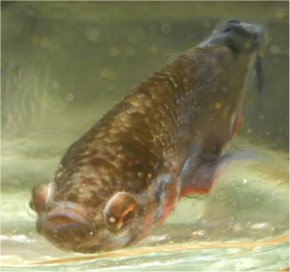 Pinhole finrot is much the same as finrot, but rather than frayed, torn edges, it appears as pinholes in a Bettas fins.
Pinhole finrot is much the same as finrot, but rather than frayed, torn edges, it appears as pinholes in a Bettas fins.
Treat the same as finrot.
Finmelt is another form of finrot. Rather than the fins rotting, the fins melt, and look like melted plastic. Finmelt is extremely aggressive, and should be hit straight away with heavy medications. Triple sulfur or tetracycline is a good choice.
VELVET
Velvet is a parasite that is very contagious.
It can be hard to spot, but if you shine a torch on your Betta and it looks as if it is covered with a fine gold or rusty dust, then sadly you have Velvet to deal with.
Bettas with Velvet will act quite sick: they will have clamped fins, and will scratch against anything such as gravel, tank walls, or decorations. They may also have a loss of appetite and colour.
To treat Velvet, keep the Betta in the dark (throw a towel over the tank), raise the heat a bit, and medicate with any medication that cures Velvet. Aquarium salt will also help*. IAL is always recommended.
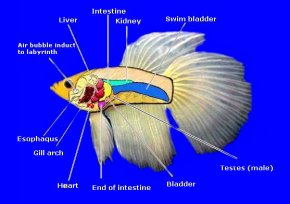 The reason you black out the tank is because velvet requires light for their life cycle. Cut the light, they cannot grow, the medication kills them, and because of lack of light - new parasites cannot start another lifecycle.
The reason you black out the tank is because velvet requires light for their life cycle. Cut the light, they cannot grow, the medication kills them, and because of lack of light - new parasites cannot start another lifecycle.
Sanitize any nets you use, along with anything your fish has had contact with.
* TIP: If you use aquarium salt, 100% sea salt is pretty much the same and works just as well. Any salt as long as it does NOT contain Iodine is fine. I use rock salt, but make sure it is dissolved before use.
SWIM BLADDER DISEASE
Swim bladder disease is not contagious, and can be caused by many things, usually overfeeding. The Swim Bladder is an organ located near its back. It helps the Betta to swim properly.
Your Betta may have gotten Swim Bladder Disease if you dropped him/her or handled too roughly. If this is the cause, it can not be cured.
When a Betta has Swim Bladder, he will either float vertically at the top of the water, or lie on the tank bottom. They will have difficultly swimming, and may or may not have a kink in its back to make it 'S' shaped.
Double Tail Betta's are more prone to Swim Bladder as they have a shorter body than singled tailed Bettas.
There isn’t really a treatment, most of the time, it sorts itself out. It’s a good idea to put your Betta in a tank longer than deep, or lower the water level. This helps them to be able to reach the surface.
Fast your betta for 24-48 hrs, and the following day, offer a pea.
Sometimes Bettas will live with SBD for their lives, but don’t worry: they aren’t in pain, just have a little difficulty maneuvering.
Thankyou, eBetta.com
DROPSY
Not much is known about Dropsy, and it is probably the most fatal Betta disease. Insufficient water quality, and disease from live food have both been blamed for causing dropsy, although there isn’t proof that they are the sole cause.
Dropsy is when a Bettas kidney fails. Fluid builds up, and causes the scales to be raised like a pine-cone.
